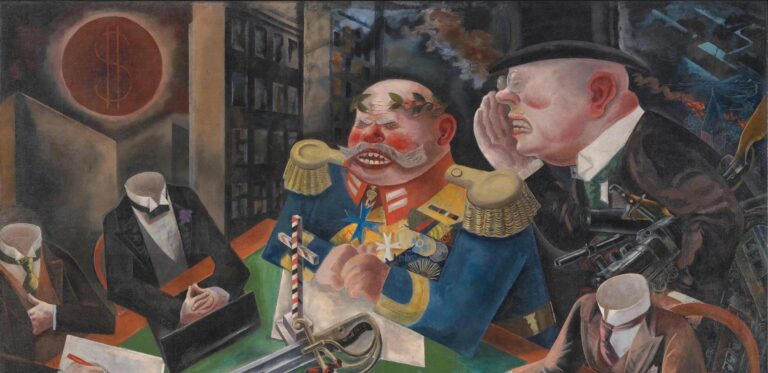In a groundbreaking move set to reshape the European art market, Italy has announced a significant reduction of its value-added tax (VAT) on art sales to just 5%, the lowest rate across the European Union. This bold step aims to bolster the country’s cultural sector and attract greater investment in art, reaffirming Italy’s commitment to preserving and promoting its rich artistic heritage. The measure, hailed as “momentous” by industry insiders, positions Italy as a leading advocate for the economic vitality of the arts amidst a shifting European fiscal landscape.
Italy Cuts Art VAT to 5 Percent Setting New EU Benchmark
In a groundbreaking move set to reshape the European art market, Italy has announced a significant reduction of its Value Added Tax (VAT) on art transactions to just 5%. This new rate, the lowest across EU member states, is expected to invigorate Italy’s cultural sector by making art more accessible to collectors, galleries, and institutions alike. Industry insiders are hailing this decision as momentous, forecasting increased liquidity and international competitiveness for Italian art markets traditionally burdened by higher tax rates.
The policy aims to support artistic creation, preservation, and encourage investment within the country. Key anticipated benefits include:
- Boosting sales for contemporary and historic artwork
- Attracting global art buyers and investors
- Enhancing cultural tourism related to art exhibitions
- Stimulating art exports and cross-border exchanges
| Country | Current Art VAT Rate | New Italian VAT Rate |
|---|---|---|
| Italy | 22% | 5% |
| France | 10% | – |
| Germany | 19% | – |
| Spain | 21% | – |
Impact on Art Market and Cultural Institutions Across Italy
Italy’s decision to reduce the VAT on art from 22% to 5% is poised to reshape the art market landscape, offering a significant boost to both buyers and sellers. This bold move is expected to lower acquisition costs, making artworks more accessible to a broader audience and potentially driving a surge in domestic and international sales. Galleries, auction houses, and art dealers stand to benefit from increased transaction volumes, while collectors may find renewed incentive to invest in Italian art, revitalizing market confidence amid uncertain economic times.
Cultural institutions across Italy are gearing up to capitalize on this fiscal reform. Museums and foundations can anticipate increased attendance and acquisitions due to enhanced financial flexibility. Key beneficiaries include:
- Public museums: Easier access to artwork purchases and conservation services.
- Private galleries: Enhanced liquidity and promotion of emerging Italian artists.
- Art fairs and events: Potential surge in participation and cross-border transactions.
| Institution Type | Expected Benefit | Potential Impact |
|---|---|---|
| Public Museums | Lower acquisition and restoration costs | Enhanced collections, higher visitor engagement |
| Private Galleries | Increased art sales and artist exposure | Market growth and diversity |
| Art Fairs | More international participants | Economic boost and global reach |
Experts Advise Collectors and Dealers to Leverage Tax Reduction Opportunities
With Italy’s unprecedented move to reduce the VAT on art acquisitions to 5%, the lowest rate in the European Union, industry experts are urging collectors and dealers to reassess their current tax strategies immediately. This fiscal adjustment not only enhances the financial feasibility of investing in Italian artworks but also creates a ripple effect across the broader European art market. Professionals advise stakeholders to capitalize on these new savings by carefully timing transactions and exploring opportunities for cross-border acquisitions within the country’s newly favorable framework.
Adapting to this shift can yield significant advantages, particularly when coupled with diligent record-keeping and an understanding of the detailed VAT application. Key recommendations include:
- Reviewing past and upcoming purchases to optimize VAT reclaim possibilities.
- Collaborating with tax advisors specialized in art transactions to navigate evolving regulations.
- Utilizing Italy’s VAT rate as leverage when negotiating deals within the EU market.
| Action | Potential Savings | Recommended For |
|---|---|---|
| Timing purchases in Italy | Up to 15% VAT reduction | Collectors & Dealers |
| VAT reclaim on cross-border sales | Variable | Dealers |
| Consult tax professionals | Minimized compliance risks | All stakeholders |
Closing Remarks
Italy’s decision to reduce the VAT on art to 5% marks a significant shift in European cultural policy, positioning the country as a leader in supporting its creative industries. As the lowest rate in the EU, this move is expected to boost art sales, encourage investment, and make Italian art more accessible both domestically and internationally. Observers will be watching closely to see how this policy influences the broader European art market and whether other countries follow suit in fostering cultural growth through fiscal incentives.




